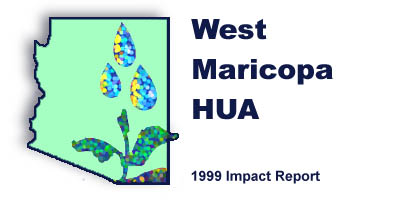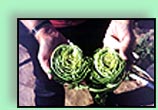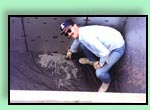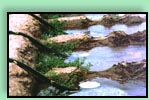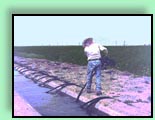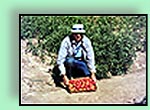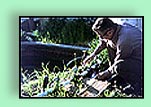|
The West Maricopa Hydrologic Unit Area (WMHUA) is located in Maricopa County, Arizona, as part of the Phoenix Active Management Area in the middle Gila River Basin. The project encompasses 1.2 million acres containing approximately 115,000 irrigated acres and 25,200 dairy acres. The WMHUA Project was initiated in 1991. In some areas of the WMHUA, the EPA 319 report showed groundwater levels of nitrate (NO3-) above the Maximum Contaminant Level of 45 parts per million . The excessive levels of nitrate are found in groundwater primarily under agricultural lands. Water containing high levels of nitrate can cause a syndrome called Methemoglobinemia, or Blue Baby Syndrome, in infants and some elderly. The WMHUA is therefore focusing on reducing the potential for leaching of nitrate from agricultural fields to the groundwater. In cooperation with local producers, the WMHUA project provided on-farm nitrogen and irrigation demonstrations, as well as technical assistance to producers for improvements such as irrigation systems, land leveling, and dairy waste water ponds. Educational projects focused on Best Management Practices (BMPs) through grower meetings, field day displays, publications, newsletters, and individual contacts. For more information on the HUAs (Hydrologic Unit Areas) in Arizona, please click on the "HUA Intro Page" button in the sidebar directory, or go on to: |
|||||||||||||||||||
This material is based upon work supported by the Extension Service, U.S. Department of Agriculture, under a special project number 95-EHUA-1-0113. |
|||||||||||||||||||
| NUTRIENT AND PESTICIDE
MANAGEMENT IMPACT 1 Results of two consecutive producer surveys administered in the WMHUA suggest that Cooperative Extension Programs in the WMHUA have become the authority on groundwater quality issues for this population of producers. The data show that in 1995, grower meetings with Cooperative Extension, Natural Resources Conservation Service (NRCS), etc. became the number one source of information on groundwater quality for area producers; 79% of respondents rated this program as an important source for most of their information on groundwater quality protection. IMPACT 2 In the past, many growers made a common practice of applying 100% of the required nitrogen for a season at pre-plant, i.e. before the seed ever touches the ground. According to the Arizona Agricultural Statistics, approximately 12% of growers followed this practice in 1991. However, through educational efforts developed by the HUA Projects, growers have been able to rethink and revise this strategy. By 1993, the number of Arizona growers still using this nitrogen application method dropped to 3%. IMPACT 3 In September 1998, the WMHUA presented a Cooperative Extension grower meeting featuring discussions exploring how proper irrigation tactics can reduce the amount of nitrate that is lost and leached into the groundwater from producer fields. In 1994, two 5 X 6 X 6 foot lysimeters were placed into the ground at the Maricopa Agricultural Center. Beginning on April 1, 1995, data on drainage and nitrate leaching were collected at regular intervals. In order to demonstrate to growers the effect of over-irrigation on nitrate leaching, one lysimeter was irrigated to meet only the crop needs, while the other was over-irrigated. Nitrogen management for both lysimeters were the same, as well as other cultural practices. Results showed that over-irrigation caused an increase in nitrate leaching but did not improve crop yields. Growers learned that with proper nitrogen management and accurate irrigation management, nitrate losses can be minimized without significant reductions in yield. |
|||||||||||||||||||
| ANIMAL WASTE MANAGEMENT IMPACT 1 The "Livestock Manager's Section" of both the 1992 and 1995 WMHUA Agricultural Producer Surveys questioned those producers who manage livestock about their solid and liquid livestock waste management. Between 20% and 30% of responding producers considered themselves to be livestock managers. When asked to indicate which waste water disposal methods were commonly used at their operations, only 8% of the respondents in 1992 chose "separate solids, liquid into pond, then applied to crop." (Other choices included "No water to dispose," "Unlined ponding basin," and "Separate solids with liquid retained in ponding basin.") In 1995, the percentage of respondents answering that they separated solids and applied them to crops (disposing of liquid into a pond) increased by 14%, to 22% of respondents using this method of waste disposal (Table 1).
|
|||||||||||||||||||
| IMPACT 2 Producers responding to both the 1992 and 1995 WMHUA Producer Surveys were given a chance to examine some possible constraints to effective management of agri-chemical and animal waste with respect to protecting groundwater. Producers in both surveys chose "Legal issues" as the number one issue they encounter as a constraint to using practices that protect against possible contamination of groundwater; 79% in 1992, and 70% in 1995 chose this as the major block to more effective disposal. Sharing the position of number-one constraint in 1995 was "Potential loss of income," with 70% finding this issue a block to the use of groundwater-protective practices; in 1992, 73% of producers felt this was an important matter as well. Growers appear to be greatly concerned about the potential for income loss due to implementation of other practices. In 1992, 68% of WMHUA producers answered that "Inadequate information " hindered their ability to practice effective management of agri-chemical and animal waste. This number dropped by 20% in the 1995 follow-up survey. The second survey results show that a significantly lower percentage - 48% - of WMHUA producers found that they did not have adequate information to ensure effective waste disposal. |
|||||||||||||||||||
| WATER CONSERVATION/
IRRIGATION IMPACT 1 The results of WMHUA Producer Surveys from both 1992 to 1995 attest to the accomplishments of the WMHUA Project in the area of irrigation. Cooperative Extension efforts in the WMHUA were chosen as the primary preferred source of information regarding irrigation application methods in both 1992 and 1995 surveys. The number of producers choosing Cooperative Extension as the foremost resource on irrigation application methods actually increased by 10% in the follow-up survey results. In Arizona, irrigation is an issue of absolute importance on most farms, and the methods of application can be a determining factor in the success of crops - and the quality of the area's groundwater. Results of the surveys pointed to a positive working relationship between producers and Cooperative Extension programs, as these programs have remained the number one source of information regarding irrigation application methods for area producers. IMPACT 2 In progress for 1999 is a project which seeks to overcome the language barrier that can isolate a group of workers who are essential to water conservation/ irrigation management in Arizona - our irrigators. This group, for the most part, controls the timing and total amount of irrigation water applied to the field. The WMHUA Project has determined that in Arizona, most irrigators speak Spanish as their primary language. The WMHUA Project is presently developing a class packet for instructors who wish to hold a bilingual workshop for irrigators. This workshop teaches irrigators about basic plant-water and soil-water relationships, irrigation scheduling, and the effect their irrigation has on farm costs, as well as water conservation. |
|||||||||||||||||||
| This class
was originally offered as a series of workshops in the
WMHUA and surrounding areas in the spring of 1997,
through a grant from he Pinal Active Management Area,
Arizona Department of Water Resources. The CGCHUA is
using material from these workshops to develop a training
packet. The Bilingual Workshop for Irrigators in Arizona will be produced as an instructor's guide which will enable the workshop to be presented throughout the state and in regions of the country where Spanish is commonly spoken. The WMHUA Project has received requests for this material from individuals involved in university agriculture in Mexico as well. For more information and a summary of the Bilingual Workshop for Irrigators in Arizona, please visit the web site at: http://cals.arizona.edu/cropsbilingue.htm IMPACT 3 The West Maricopa Hydrologic Unit Area Project continues to serve the agricultural community through the University of Arizona Cotton Field Day, held annually in October. This event features displays, handouts, and personal contacts with growers throughout the state. From 1992 - 1999, Cotton Field Day has made an estimated 5,800 contacts with industry peers and local growers. |
|||||||||||||||||||
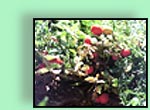 |
IMPACT 4 The WMHUA Project has cooperated with the NRCS to effect several structural and physical improvements for the purpose of enhancing irrigation efficiency. Total acreage of irrigation water management was 34,301 acres, with 12,731 acre-feet of water saved. (Refer to Table 2 for a complete listing of improvements since 1991.)
|
||||||||||||||||||
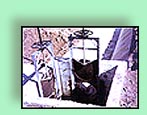 |
PUBLICATIONS Water Quality White
Papers: Groundwater Contamination - Groundwater Quality Database for Maricopa County Video: "How Water Moves Through Soil" Video: "How Chemicals Move Through Soil" Irrigation Slide Chart - Arizona Water Series: Number 21 IN PROGRESS... WMHUA Project Agricultural Producer Survey #2 Bilingual Workshop for Irrigators: Instructor's Guide |
||||||||||||||||||
| COOPERATORS - Cooperative States
Research, Education, and Extension Service |
|||||||||||||||||||
| ACKNOWLEDGEMENTS The CGCHUA Project would like to acknowledge the efforts of the producers and cooperators who have assisted in research and extension projects over the past decade. CONTACTS For more information regarding the West Maricopa Hydrologic Unit Area, please contact Dr. Edward C. Martin via e-mail: You may also contact Dr. Martin at: Maricopa
Agricultural Center Phone: (520)
568 - 2273 The University of Arizona College of Agriculture is an equal opportunity employer authorized to provide research, educational information and other services only to individuals and institutions that function without regard to sex, race, religion, color, national origin, age, Vietnam Era Veteran's status, or handicapping condition. Any products, services, or organizations that are mentioned, shown, or indirectly implied in this publication do not imply endorsement by The University of Arizona. Maintained by: jsjones@ag.arizona.edu This document
located at: |
|||||||||||||||||||
